Mixing common household cleaners can be dangerous. Bleach and ammonia are two popular cleaning products found in many homes. When combined, they create a serious health hazard.
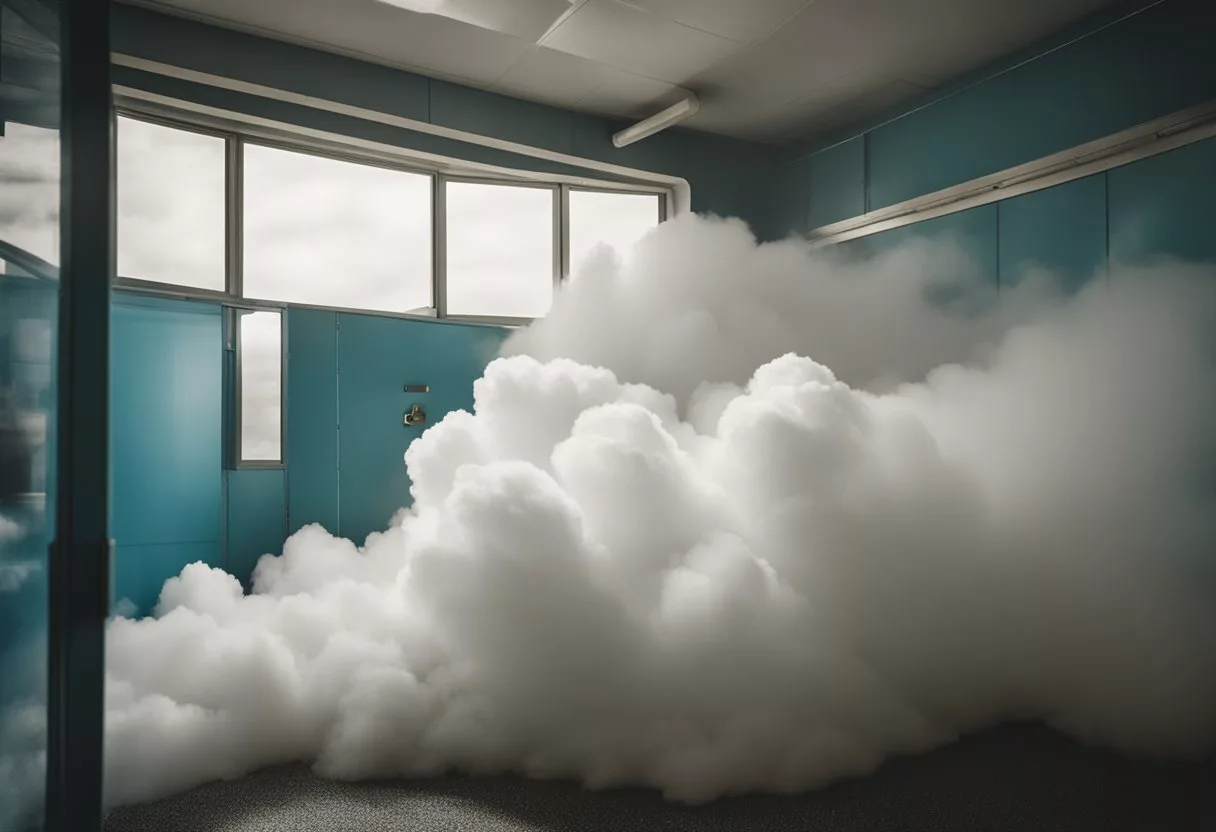
Mixing bleach and ammonia produces toxic gases that can cause severe respiratory problems and even death. The main gas formed is chloramine, which irritates the eyes, nose, and lungs. Even small amounts can lead to coughing, chest pain, and breathing difficulties.
Never mix bleach with ammonia or any product containing ammonia. This includes many glass and window cleaners. Always read product labels carefully and keep cleaning supplies separate. If you accidentally mix these chemicals, leave the area right away and get fresh air. Call for emergency help if you have trouble breathing.
Key Takeaways
- Mixing bleach and ammonia creates toxic gases that can be deadly
- Always read cleaning product labels and keep chemicals separate
- If exposed to toxic fumes, leave the area immediately and seek medical help
Understanding Bleach and Ammonia
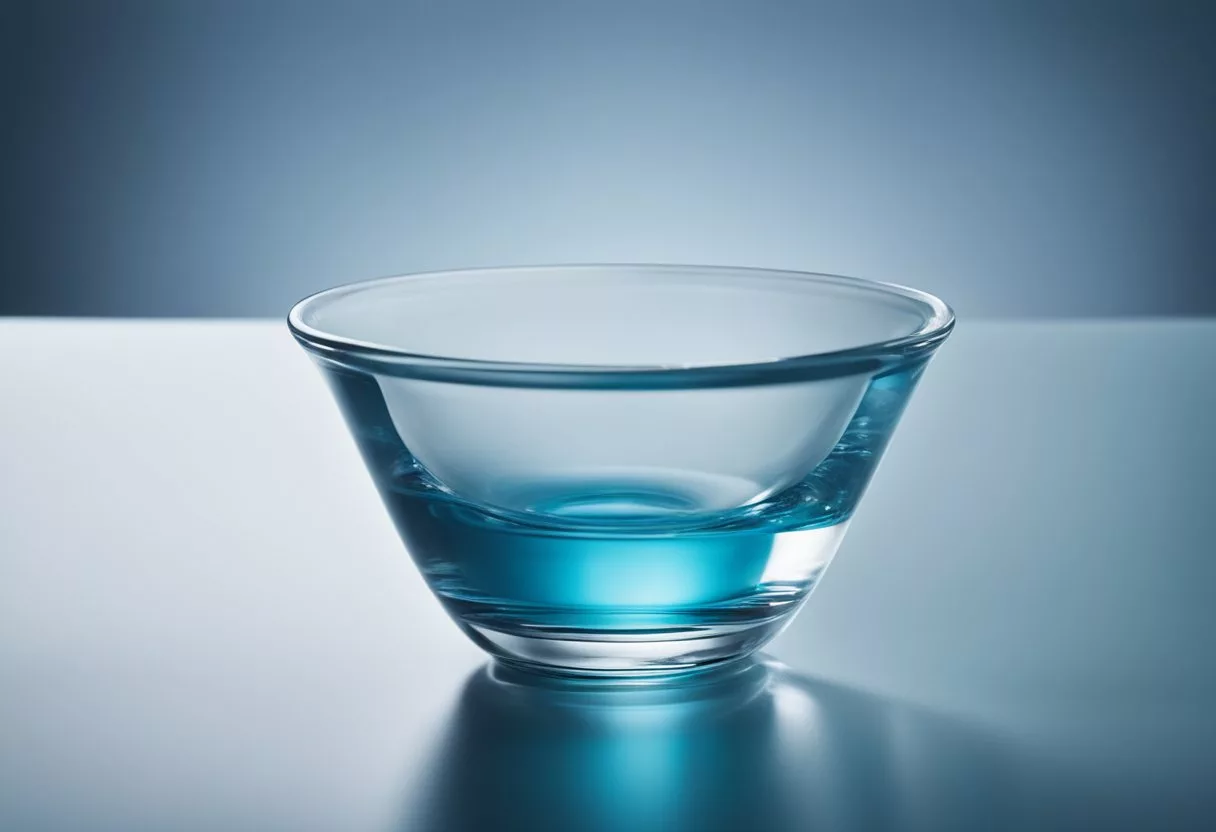
Bleach and ammonia are common household cleaners with distinct chemical properties. These substances have specific compositions and characteristics that make them effective for cleaning but dangerous when mixed.
Composition of Household Bleach
Household bleach is a solution of sodium hypochlorite in water. It typically contains 3-8% sodium hypochlorite. The active ingredient gives bleach its cleaning and disinfecting power.
Bleach works by releasing chlorine, which breaks down stains and kills germs. This chemical reaction makes it effective for whitening clothes and sanitizing surfaces.
Sodium hypochlorite is highly reactive. It can interact with other substances, sometimes producing harmful results. This reactivity is why bleach should not be mixed with other cleaners.
Properties of Ammonia
Ammonia used in household cleaners is a solution of ammonium hydroxide in water. It has a strong, pungent smell and is an effective cleaner for grease and grime.
The chemical formula for ammonia is NH3. It consists of one nitrogen atom bonded to three hydrogen atoms. In water, it forms ammonium hydroxide.
Ammonia is alkaline, which helps it cut through dirt and oil. Its ability to evaporate quickly makes it useful for cleaning glass without leaving streaks.
Like bleach, ammonia is reactive. It can form dangerous compounds when mixed with other cleaning products, especially bleach.
The Dangers of Mixing Bleach and Ammonia
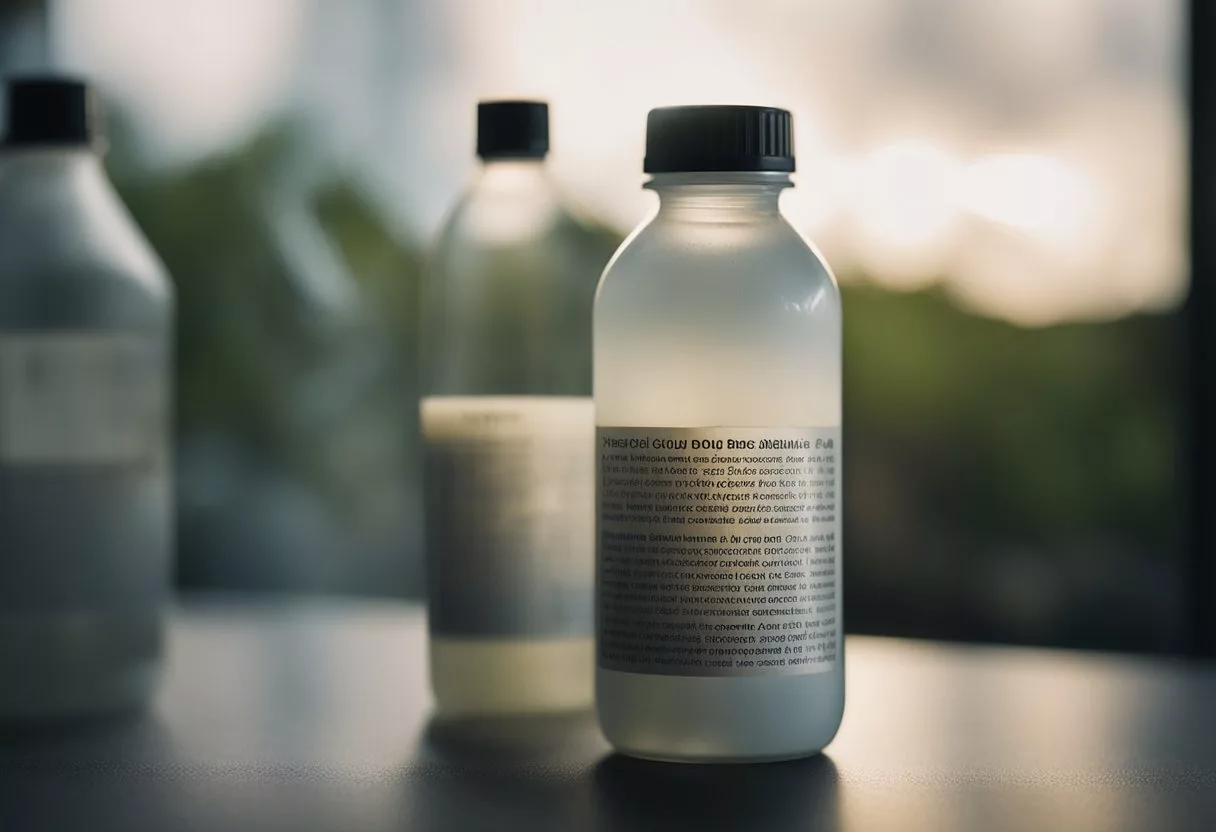
Mixing bleach and ammonia creates toxic gases[1] that can cause severe health problems. This combination produces harmful chemicals that can damage the respiratory system and even lead to death in extreme cases.
Chemical Reactions and Toxic Gases
When bleach and ammonia are combined, they form chloramine gas. This gas is highly toxic and can cause serious harm if inhaled. The reaction also produces other dangerous substances like hydrochloric acid and chlorine gas.
These chemicals are very unstable and can quickly fill the air in an enclosed space. Even small amounts of these gases can be harmful. The reaction happens fast, often catching people off guard.
Chloramine gas is especially dangerous because it’s heavier than air. It stays low to the ground, making it easy to breathe in. This gas can also seep into nearby rooms, putting others at risk.
Health Risks and Symptoms of Exposure
Exposure to the gases from mixing bleach and ammonia can cause many health issues. Symptoms can range from mild to severe, depending on how much gas is inhaled.
Common symptoms include:
- Watery eyes
- Coughing
- Wheezing
- Shortness of breath
- Chest pain
- Nausea
In serious cases, it can lead to:
- Pneumonia
- Fluid in the lungs
- Throat burns
- Severe damage to the respiratory system
Breathing in these toxic fumes can be deadly in high concentrations. People with breathing problems, like asthma, are at higher risk. Even brief exposure can cause long-lasting health effects.
If someone is exposed, they should move to fresh air right away. Seek medical help if symptoms are severe or don’t improve quickly.
First Aid and Emergency Response
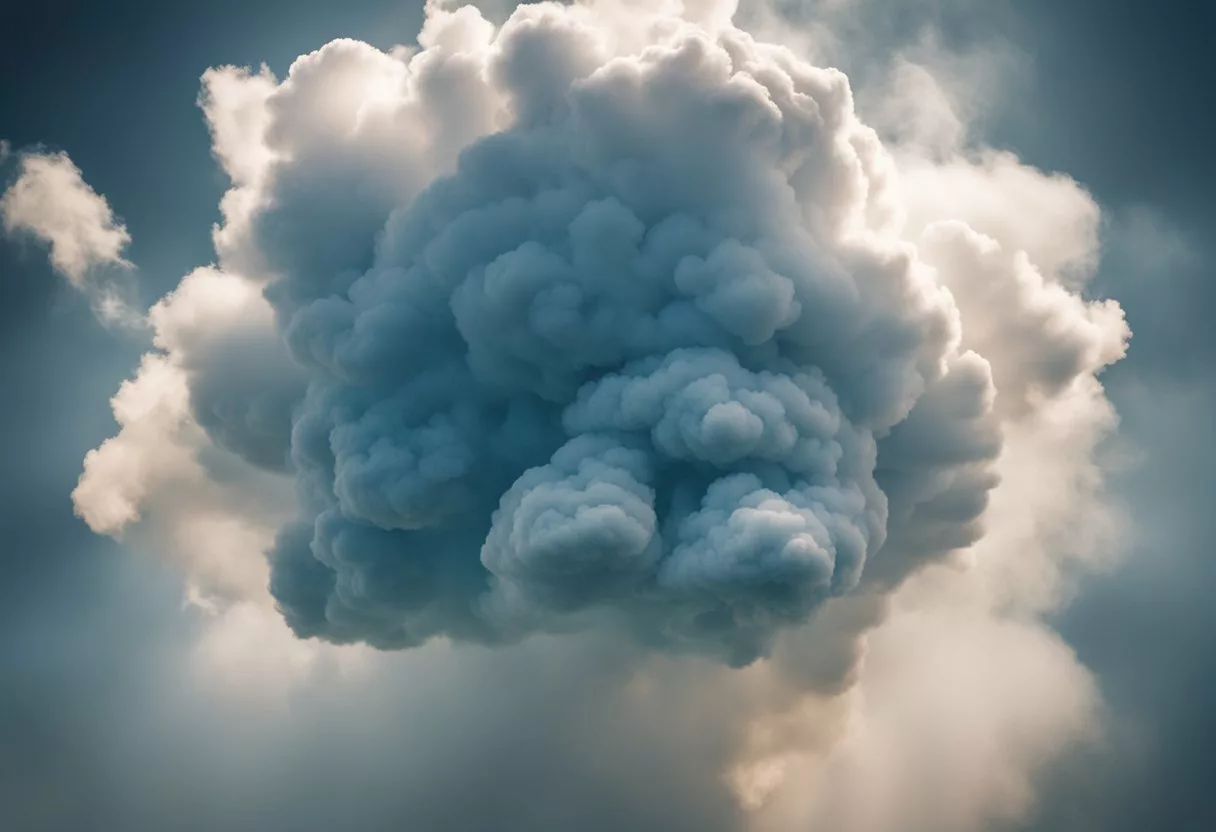
Quick action is vital when someone is exposed to bleach and ammonia fumes. Proper steps can prevent serious harm and save lives.
Immediate Steps After Exposure
Move the person to fresh air right away. Get them away from the fumes as fast as possible. Open windows and doors to air out the area.
If the person isn’t breathing, start CPR. Call 911 for emergency help.
Remove any clothes with chemicals on them. Rinse the skin with lots of water for at least 15 minutes. Flush eyes with water for 15-20 minutes if affected.
Don’t try to make the person throw up. This can cause more damage.
Keep the person calm and watch for signs like coughing, trouble breathing, or burning eyes.
When to Contact Poison Control
Call the Poison Control Center[2] at 1-800-222-1222 right away, even if there are no symptoms. They can give expert advice on what to do next.
Tell them what chemicals were mixed, how much, and how the person was exposed.
Describe any symptoms the person is having. This helps determine if they need more treatment.
Follow their instructions carefully. They may tell you to go to the ER or give home care tips.
Keep the Poison Control number handy. It’s open 24/7 and free to call.
If symptoms are severe or the person passes out, call 911 instead of Poison Control.
Preventing Accidental Mixing
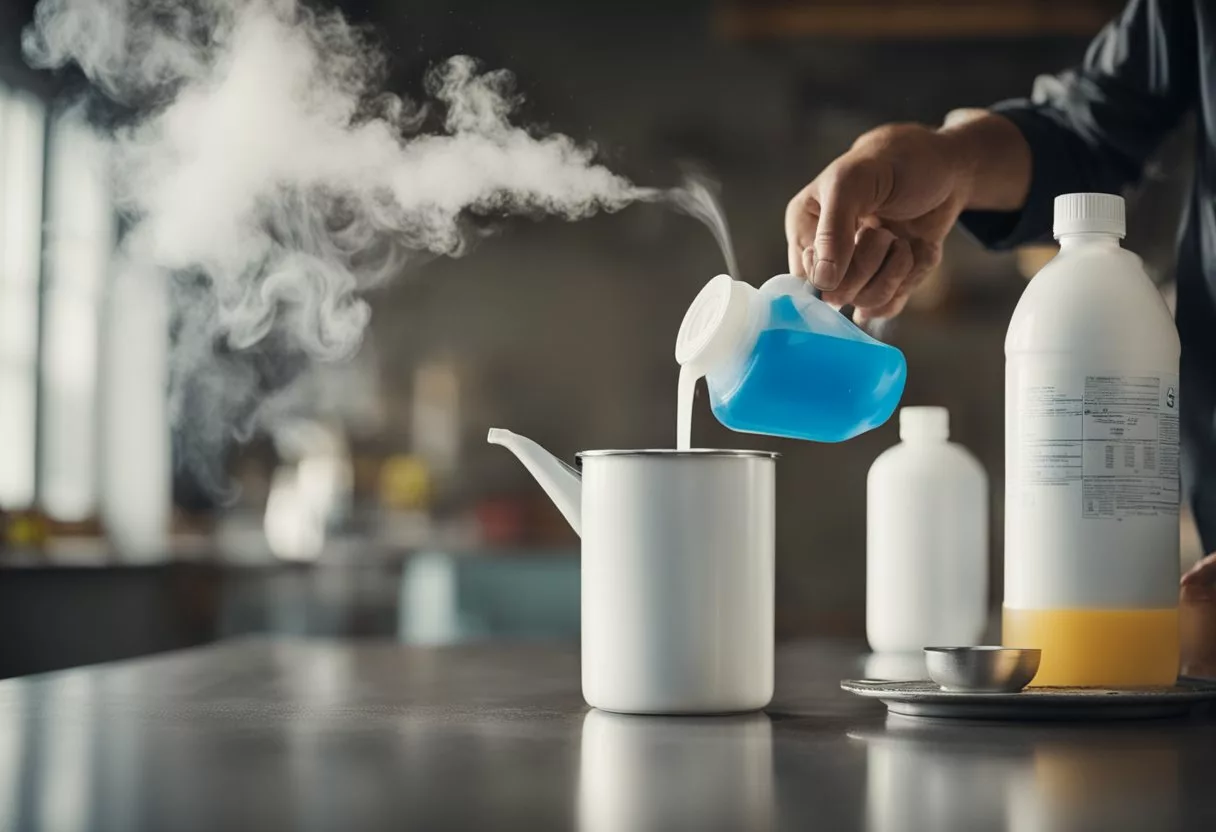
Keeping cleaning products separate and reading labels carefully are key to avoiding dangerous chemical reactions. Proper storage and understanding what’s in cleaners helps prevent accidental mixing of incompatible substances.
Safe Use of Cleaning Products
Never mix different cleaning products together. Keep bleach and ammonia separate[1] at all times. Store cleaners in their original containers with labels intact.
Use only one cleaning product at a time. Rinse surfaces thoroughly before switching to a new cleaner. This prevents leftover residues from interacting.
Ensure good ventilation when cleaning. Open windows and run fans, especially in small spaces like bathrooms. Proper airflow helps disperse fumes.
Wear gloves and eye protection when using strong cleaners. This protects skin and eyes from irritating chemicals.
Keep cleaners out of reach of children and pets. Store products in locked cabinets or high shelves to prevent accidental ingestion or spills.
Understanding Product Labels
Always read product labels before use. Look for warnings about mixing with other substances. Many household cleaners[3] contain ammonia or bleach.
Check ingredients lists for chlorine bleach, ammonia, or acids. These are common in products like window cleaners and toilet bowl cleaners.
Look for the Safer Choice Standard label. This EPA designation indicates safer chemical ingredients.
Be aware that some products may contain hidden ammonia. Cat urine and some glass cleaners can have ammonia that’s not obvious.
Pay attention to disposal instructions. Some products require special handling to avoid contaminating water sources or creating hazardous fumes.
Alternatives to Bleach and Ammonia
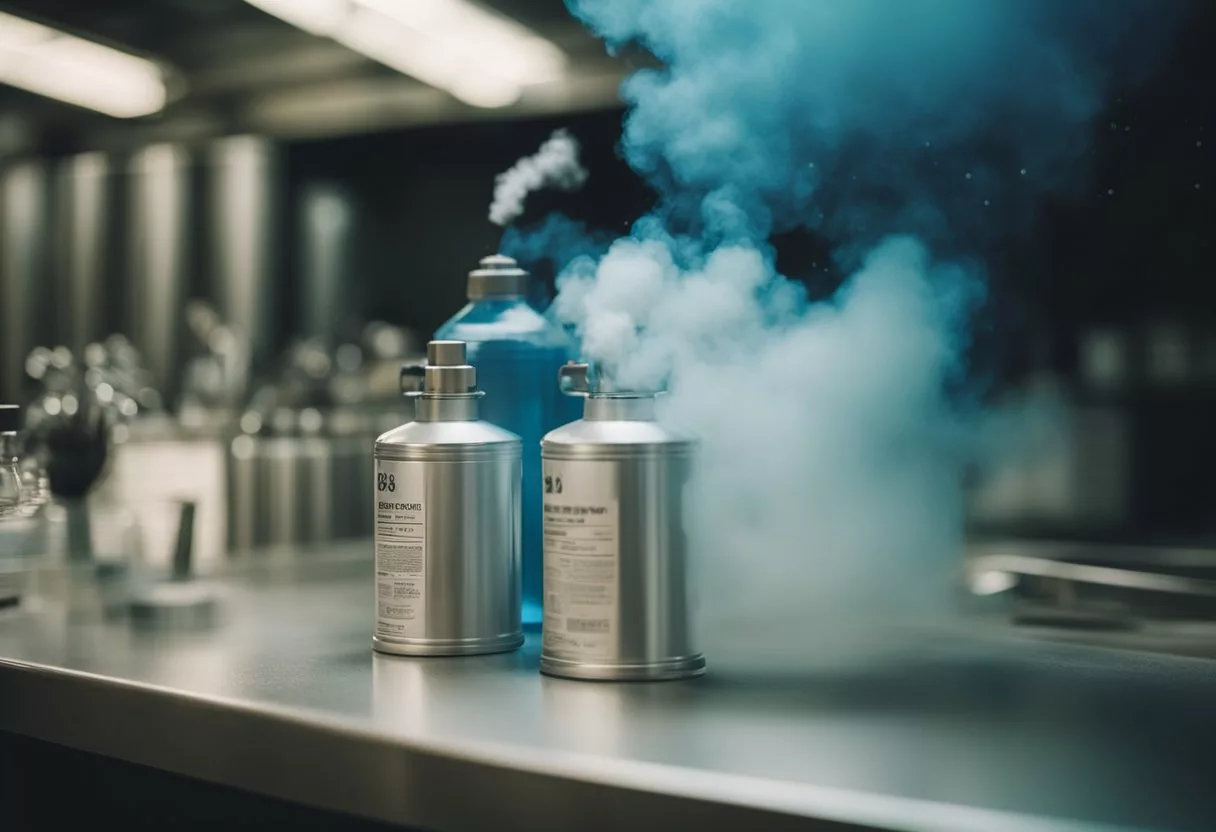
Safe and effective cleaning options exist that don’t involve harsh chemicals. These alternatives can clean and disinfect without the risks of mixing dangerous substances.
Environmentally Friendly Cleaners
Many eco-friendly cleaning products work well on different surfaces. Hydrogen peroxide is a good disinfectant for counters and bathrooms. It breaks down into water and oxygen, leaving no toxic residue.
Baking soda cleans sinks, tubs, and toilets. It’s mildly abrasive and helps remove stains. For tougher jobs, a paste of baking soda and water works even better.
Lemon juice cuts through grease and grime. Its acidic properties make it great for cleaning kitchen surfaces. Mix equal parts water and lemon juice in a spray bottle for an all-purpose cleaner.
White vinegar disinfects and deodorizes. It kills many types of bacteria. Dilute it with water to clean floors, windows, and other surfaces.
Natural Cleaning Solutions
Plant-based soaps clean well without harsh chemicals. Look for products that meet the EPA’s Safer Choice Standard[4]. These are tested for safety and effectiveness.
Essential oils like tea tree, eucalyptus, and lavender have antibacterial properties. Add a few drops to water or vinegar for a pleasant-smelling cleaner.
Borax, a natural mineral, boosts the cleaning power of other products. It’s good for laundry and general household cleaning. Mix it with vinegar to clean toilets and drains.
Steam cleaning uses only water and heat to disinfect surfaces. It’s especially good for floors and upholstery.
Understanding the Labels and Regulations
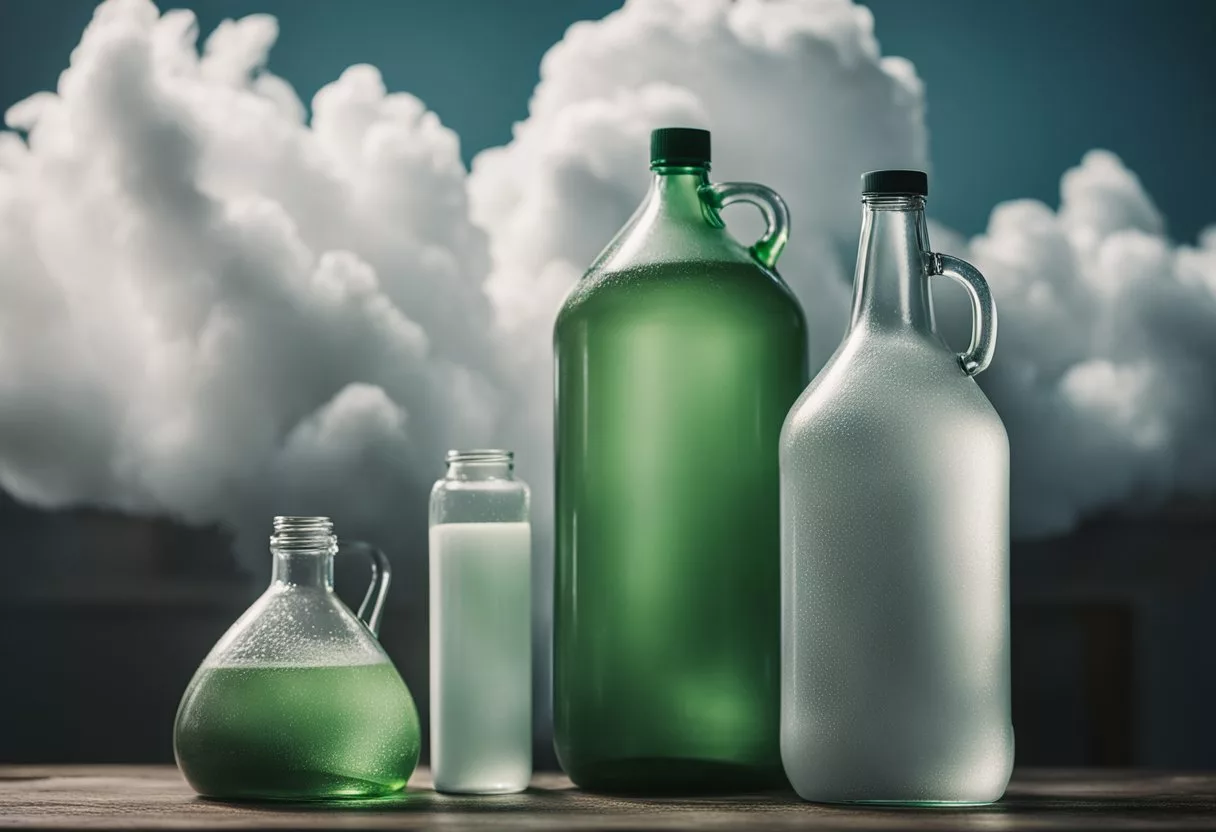
Reading product labels and following safety guidelines is crucial when using household cleaners. Proper handling of chemicals helps prevent dangerous reactions and keeps users safe.
Navigating Cleaner Labels and Warnings
Cleaner labels contain vital safety info. Look for words like “Danger” or “Warning.” These show how hazardous a product is. Bleach labels often say not to mix with other cleaners.
Ammonia-based products have similar warnings. Labels list active ingredients like sodium hypochlorite (bleach) or ammonium hydroxide (ammonia). They also give first aid steps for accidents.
Some labels use pictures to show dangers. A skull means very toxic. Flames show it’s flammable. Check the back label for a full list of warnings and safety tips.
Regulatory Standards for Chemical Products
The government sets rules for cleaning product safety. Makers must list all ingredients clearly. Dangerous mixes like bleach and ammonia[5] need extra warnings.
Safety standards cover how to make, pack, and label cleaners. Rules say what words to use for different danger levels. They also set limits on harmful chemicals.
Companies must prove their products are safe when used right. This includes testing for reactions with common items. Regulators check if labels have correct info. They can fine companies that break the rules.
Broader Impacts of Chemical Exposure
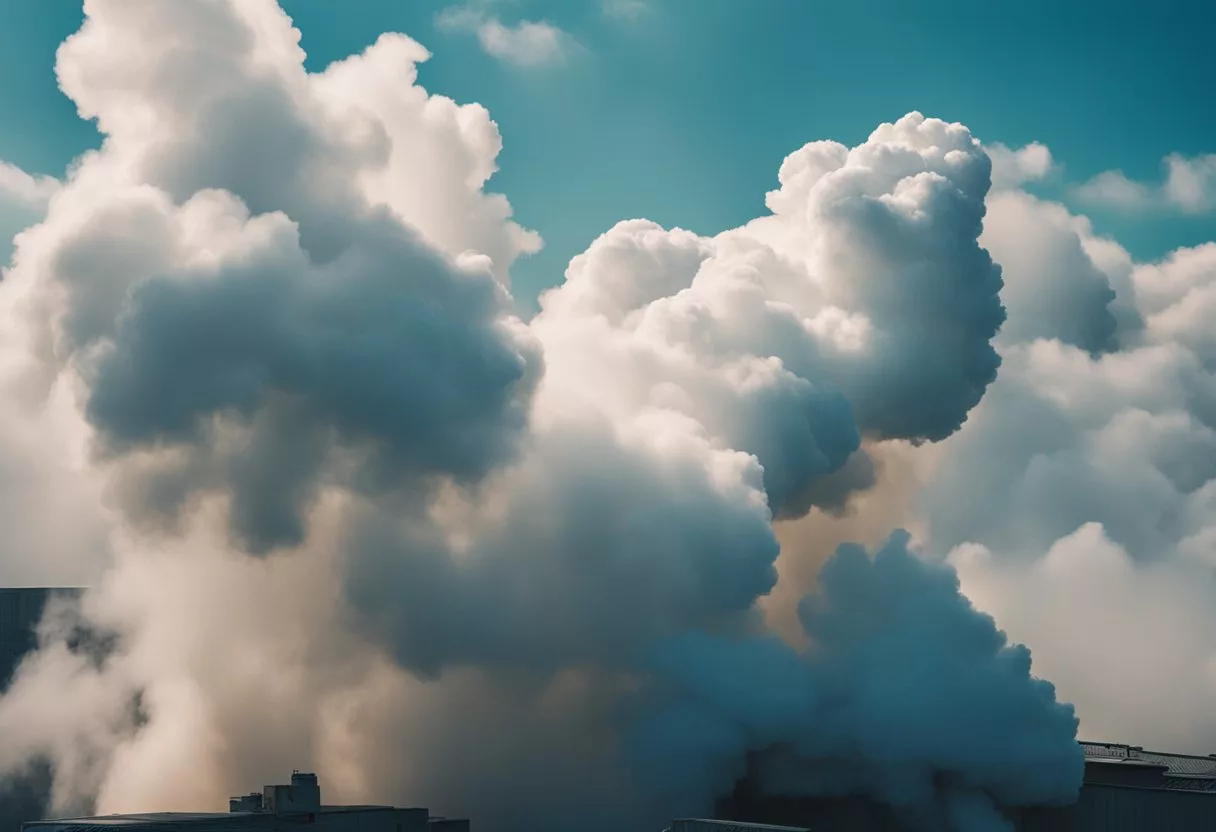
Mixing bleach and ammonia creates toxic gases that can harm people and the environment. These effects go beyond immediate health risks.
Environmental Concerns
Toxic gases from bleach and ammonia can spread through the air and water. They may hurt plants and animals. Chloramines can get into lakes and rivers. This harms fish and other water life.
The chemicals can also seep into soil. This makes it hard for plants to grow. Animals that eat these plants may get sick.
Fumes can travel far from where they started. This puts more people and places at risk. Even small amounts of these gases can cause problems over time.
Long-Term Health Implications
Exposure to bleach and ammonia fumes can lead to lasting health issues. People may have trouble breathing for years after. Their lung function[6] might never fully recover.
Some effects show up later:
- Asthma
- Chronic bronchitis
- Higher risk of lung infections
In severe cases, it can cause permanent lung damage. This may lead to disability or early death. The elderly and children face the highest risks.
Repeated exposure, even at low levels, can build up over time. This makes the dangers worse. It’s crucial to avoid mixing these chemicals to protect long-term health.
Frequently Asked Questions
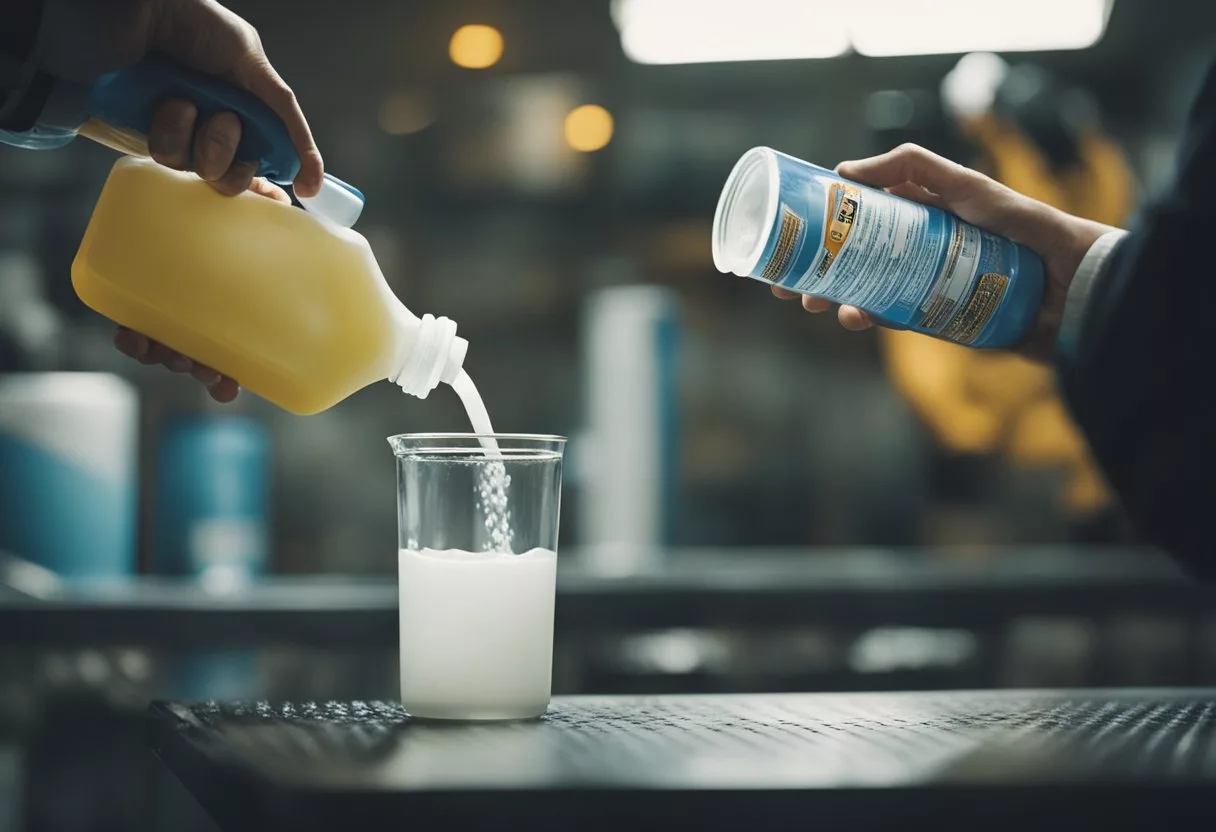
Mixing bleach and ammonia creates dangerous chloramine gas. This poses serious health risks and requires immediate action if exposure occurs. Proper safety measures and knowledge of first aid are crucial.
What are the health risks associated with exposure to chloramine gas from mixed bleach and ammonia?
Exposure to chloramine gas can cause severe respiratory issues. Symptoms include coughing, shortness of breath, and chest pain.
In extreme cases, it may lead to lung damage or even death. Eye and skin irritation are also common side effects of exposure.
How should one react in a situation where bleach has been inadvertently combined with ammonia?
Leave the area immediately and get fresh air. Open all windows and doors to ventilate the space.
Do not attempt to clean up the mixture. Call for professional help or the local fire department to safely handle the situation.
What are the immediate first aid steps to take after accidental inhalation of fumes from mixing bleach and ammonia?
Move to fresh air right away. If breathing is difficult, seek medical attention immediately.
Rinse eyes with water for 15-20 minutes if irritated. Remove any contaminated clothing and wash skin thoroughly with soap and water.
How long do bleach and ammonia fumes remain hazardous in an enclosed space?
The fumes can remain dangerous for several hours, depending on ventilation. It’s crucial to thoroughly air out the area before re-entering.
Use fans to help circulate air. Do not return until all odors have dissipated completely.
Are there any safe methods to neutralize the effects of mixed bleach and ammonia?
There is no safe way to neutralize this mixture at home. The best approach is to ventilate the area and allow the fumes to dissipate naturally.
Never add water or other substances to the mixture, as this can worsen the reaction.
Can a mixture of ammonia and bleach lead to an explosive reaction under any conditions?
While not typically explosive, the reaction can be violent and release dangerous gases. In enclosed spaces, pressure buildup could potentially cause containers to burst.
Avoid mixing these chemicals under any circumstances to prevent hazardous situations.
References
- toxic gases. https://www.verywellhealth.com/mixing-bleach-and-ammonia-1298711 Accessed November 6, 2025
- Poison Control. https://www.poison.org/ Accessed November 6, 2025
- Mixing Bleach and Ammonia. https://sciencenotes.org/mixing-bleach-and-ammonia-heres-what-happens/ Accessed November 6, 2025
- Safer Choice Standard and Criteria. https://www.epa.gov/saferchoice/standard Accessed November 6, 2025
- Ammonia. https://www.epa.gov/caddis/ammonia Accessed November 6, 2025
- Never Mix Bleach and Ammonia: Yes, It Can Kill You. https://www.healthline.com/health/bleach-and-ammonia Accessed November 6, 2025
